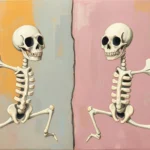
Have you ever woken up from a dream feeling like you’ve just been on an adventure? Those vivid, sometimes bizarre narratives that play out while you sleep can leave you with lingering thoughts that echo throughout your day. Dreams have long fascinated humanity, allowing us to explore our inner worlds and revealing hidden truths about our lives. They act as windows into our subconscious, filled with symbols that can guide us toward deeper understanding.
In this article, we’ll delve into the significance of dream symbols, explore real-life scenarios, and discuss how these dreams can lead to profound personal growth. So, grab a cup of tea, settle in, and let’s embark on this journey together toward unveiling the mysteries of your dreams.
The Language of the Mind: Unlocking Symbolism
When interpreting dreams, the symbols that arise are central to understanding their meaning. These symbols are the language of the unconscious, often reflecting your current emotional state, past experiences, and even cultural influences. For instance, a dream about flying might represent a desire for freedom or escape, while dreaming of being chased could indicate that you are avoiding a particular issue in your waking life.
In many cultures, dream symbols carry unique meanings. For example, in Native American traditions, certain animals symbolize various traits: a bear might represent strength, while a fox could signify cunning. Similarly, in Eastern philosophies, dreams are often seen as messages from the universe or spiritual guides, providing insight into your life’s path.
Moreover, psychological theories, such as those proposed by Carl Jung, suggest that symbols in dreams tap into collective unconsciousness. Jung believed that certain archetypes — like the hero, the shadow, or the wise old man — manifest in our dreams to help us navigate our personal journeys. Thus, recognizing and interpreting these symbols can provide valuable insights into your psyche.
To make this more tangible, let’s explore some common dream symbols:
- Water: Often symbolizes emotions and the unconscious mind. A calm lake might suggest peace, while turbulent waves could indicate emotional turmoil.
- Houses: Typically represent the self or various aspects of your personality. Different rooms may symbolize different facets of your life.
- Death: While unsettling, this symbol often indicates transformation or change rather than a literal ending.
- Falling: This might represent feelings of insecurity or loss of control in waking life.
- Teeth: Dreaming of losing teeth is a common experience that can symbolize anxiety about appearance or fear of aging.
Understanding these symbols can help you decode the messages your dreams are conveying. So the next time you wake up from a vivid dream, take a moment to reflect on the symbols that appeared and what they might relate to in your life.
The Dream Diary: Tales from the Night
Dreams can be as unique as the individuals who experience them. Here, we’ll consider a few scenarios that illustrate the myriad ways dreams manifest in our lives, guiding us through our current challenges or desires.
Scenario 1: The Office Catastrophe
Imagine a dream where you’re at work, but chaos reigns. Papers are flying everywhere, and your boss is demanding results that seem impossible. This could reflect your stress and anxiety about work deadlines or performance pressures. It might be your mind’s way of expressing the overwhelm you feel in your waking life, urging you to prioritize self-care and set boundaries.
Scenario 2: The Endless Maze
You find yourself wandering through an endless maze, encountering dead ends and unfamiliar faces. This dream could symbolize feelings of confusion or being lost in your life. Perhaps you’re facing a tough decision or feeling uncertain about your future. This scenario invites you to pause, reflect, and seek clarity on what truly matters to you.
Scenario 3: The Reunion
You dream of meeting an old friend or an ex-lover, and the emotions are palpable. This scenario might speak to unresolved feelings or nostalgia for the past. It could be a reminder to reconnect with parts of yourself that you’ve neglected or to address unfinished business. Consider reaching out, either to them or to the feelings you have yet to process.
Scenario 4: The Flight
In your dream, you take to the skies, soaring above landscapes you love. This could symbolize freedom, ambition, or a desire for change. Are there aspects of your life that you wish to elevate? This dream encourages you to embrace your aspirations and take action toward achieving your goals.
Scenario 5: The Mirror
You stand in front of a mirror in your dream and notice that your reflection is different — perhaps you’re younger or have features you don’t recognize. This dream might represent self-exploration or a desire to understand your identity better. It’s a gentle nudge to confront your self-image and consider how you want to present yourself to the world.
Each of these scenarios underscores the significance of the emotions and experiences you encounter in your waking life. By reflecting on your dreams, you can gain valuable insights into your thoughts and feelings, allowing you to navigate life with greater awareness and intention.
The Journey Within: Growing Through Dreams
Dreams are not just whimsical narratives; they can serve as powerful tools for personal growth and self-discovery. By engaging with the insights they offer, you can foster a deeper understanding of yourself and your life’s path. Here are a few practical strategies to harness the power of your dreams:
1. Keep a Dream Journal
Start a dream journal by your bedside. As soon as you wake up, jot down everything you can remember about your dreams. Over time, you may notice patterns or recurring symbols that can lead to deeper insights. This practice can enhance your dream recall and help you connect with your subconscious mind more effectively.
2. Reflect on Your Emotions
After recording your dreams, take a moment to reflect on the emotions you experienced during the dream. Were you anxious, joyful, or fearful? This emotional exploration can reveal underlying feelings or concerns that may be affecting your waking life. Emotions are the key to unlocking the messages within your dreams.
3. Explore Symbolism
Once you’ve identified key symbols from your dreams, take time to research their meanings. You can consult dream dictionaries, cultural texts, or even psychological theories. Understanding the significance of these symbols can lead to powerful insights and self-awareness.
4. Integrate Insights into Your Life
Consider how the messages from your dreams can inform your waking decisions. Are there actions you need to take, changes to be made, or fears to confront? Use the guidance from your dreams to create a plan for personal development. Let your dreams be your compass, guiding you toward growth and transformation.
5. Practice Lucid Dreaming
If you’re feeling adventurous, why not explore lucid dreaming? This practice allows you to become aware that you’re dreaming while in the dream state, often giving you the ability to control the dream’s narrative. It can be a powerful tool for self-exploration and creativity, enabling you to confront fears or pursue desires in a safe space.
As you embark on your journey of dream interpretation, remember that dreams are deeply personal. What resonates with one person may not have the same meaning for another. Ultimately, the interpretation lies in your hands, guided by your intuition and experiences.
In closing, I invite you to reflect on this powerful notion: Your dreams are not just stories; they are invitations to explore your inner landscape. Embrace this journey with curiosity and openness, for within the realm of dreams lies the potential for profound self-discovery and growth. So, the next time you drift off to sleep, consider it an opportunity — a chance to tap into the wisdom of your subconscious and awaken to a richer, more vibrant life.







